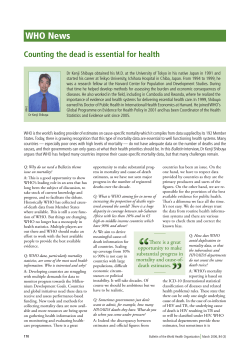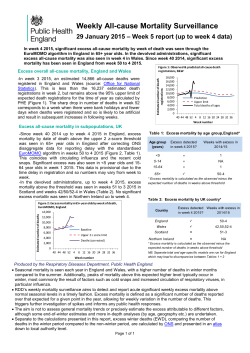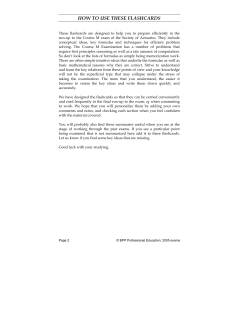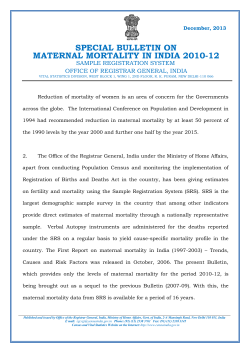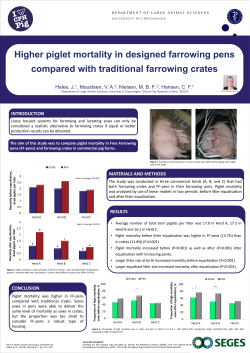
ACTS 4301 Instructor: Natalia A. Humphreys HOMEWORK 2 Lesson
ACTS 4301 Instructor: Natalia A. Humphreys HOMEWORK 2 Lesson 2. Survival Distributions: Probability Functions. Lesson 3. Survival Distributions: Force of Mortality. Due: January 29, 2015 (Thurs) Sufficient work must be shown to get credit for a correct answer. Partial credit may be given for incorrect answers which have some positive work. Problem 1 You are given the following survival function: 2500−x2 2500 S(x) = 0 0 ≤ x ≤ 50 x > 50 Calculate q43 (A) 0.8664 (B) 0.1336 (C) 0.1543 (D) 0.0471 (E) 0.0449 Problem 2 You are given the following mortality table: x qx 21 lx dx 20,000 1100 22 23 17,450 24 0.0600 25 0.0680 13,200 Determine the probability that a life age 22 will die within two years. Problem 3 You are given: (i) The probability that a person age (ii) The probability that a person age (iii) The probability that a person age Calculate the probability that a person 40 is alive at age 45 is 0.8. 45 is not alive at age 50 is 0.11. 40 is alive at age 55 is 0.57. age 45 dies between ages 50 and 55. Problem 4 The force of mortality is µx = Calculate 9 p43 . 1 90 − x ACTS 4301. SP 2015. HOMEWORK 2. Problem 5 Given that the force of mortality is µx = 3x2 , determine the cumulative distribution function for the random variable time until death, F (x), the density function for that random variable, f (x), and the survival function s(x). Problem 6 The force of mortality for Mary is µx = 3. The force of mortality for Sarah is µx = kx4 . Determine k for which 6 p13 is the same for Mary and Sarah. (A) 4.2759 · 10−5 (B) 1.1574 · 10−2 (C) 2.3148 · 10−3 (D) 2.8884 · 10−4 (E) 1.0504 · 10−4 Problem 7 For a standard life, 5 p35 = 0.97. Since April, age 35, is recovering from an accident, she is subject to extra mortality. Therefore, the µx applying to April is increased for x between 35 and 40. The increase over the µx for a standard life is 0.004 at x=35, decreasing in a straight line to 0 at age 40. Calculate 5 p35 for April. Problem 8 You are given µx = 2x , 0 ≤ x ≤ 40 (1600 − x2 ) Determine the probability that (x) dies within a year. Problem 9 A mortality table has a force of mortality µx+t and mortality rate qx . A second mortality table has a force of mortality µ∗x+t and mortality rate qx∗ . You are given µ∗x+t = 0.25µx+t for 0 ≤ t ≤ 1. Calculate qx∗ in terms of qx . Problem 10 √ The force of mortality is µx = 0.005 3 x. Calculate the probability of someone age 18 surviving 40 years and then dying in the next 12 years. Copyright ©Natalia A. Humphreys, 2015 Page 2 of 2
© Copyright 2025

